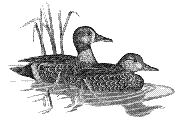United States Fish and Wildlife Service

Waterfowl Management Handbook
Date of this Version
January 1990
Abstract
Waterfowl management on public lands in the United States began about 1870 with the establishment of Lake Merritt, a State-owned refuge near Oakland, California. In 1924 the United States established the Upper Mississippi River Wild Life and Fish Refuge, a complex of waterfowl habitats extending from Wabasha, Minnesota, to Rock Island, Illinois. Over the next 50 years, more than 80 million acres of county, State, and Federal lands were acquired across the United States to provide waterfowl production, migration, and wintering habitats. Because of these early (and continuing) efforts, a significant portion of North America’s remaining valuable wetland complexes exists on public lands.
Despite the success of governments in acquiring, restoring, and managing public lands for waterfowl and other species, many wildlife populations have declined to the lowest levels ever recorded. This is due, in part, to the historic and ongoing conversion of important wetlands and grasslands to croplands. Between 1950 and 1985 it is estimated that more than 450,000 acres of wetlands were converted each year; at least 87% of those conversions were for agricultural purposes. Today, 74% of the remaining wetlands are on private lands and are vulnerable to destruction.
In recent years, public and private conservation organizations have initiated programs designed to provide economic incentives for wildlife management on private lands. Other programs, whose primary objectives are other than waterfowl management, also improve and preserve waterfowl habitat on private lands. These programs range from tax incentives and wetland easements to direct financial assistance to landowners. In this chapter, legal and economic incentives for waterfowl management on private lands are summarized under the following categories: Federal programs, State and local programs, and private conservation organization programs.
In most instances, government programs and those of private conservation organizations complement one another and often provide the private landowner many alternatives from which to choose. Likewise, governmental and private organizations have recently expressed a strong desire to form partnerships to better manage waterfowl. This is one of the most important concepts in the North American Waterfowl Management Plan. No single entity has the capability to address the waterfowl needs of the future through unrelated and independent actions. Through combined efforts, however, we have a much better chance to achieve waterfowl management objectives.
The major purpose of this chapter is to discuss an array of economic and legal incentives for waterfowl management, although it is not a complete list. I am hopeful that the information contained here will stimulate the reader to investigate specific programs that are available for waterfowl management on private lands at the local level.


Comments
Published in Diana H. Cross and Paul Vohs (eds.) Waterfowl Management Handbook. Fort Collins, CO: U.S. Fish and Wildlife Service, 1988. Online at http://www.nwrc.usgs.gov/wdb/pub/wmh/contents.html